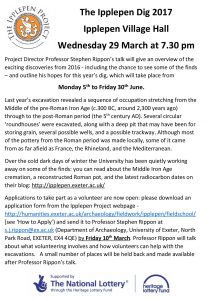You may be interested to know that we have just uploaded a new video on to the Ipplepen web page.
This video shows Graham Fereday and Rich Webb from the University of Exeter Digital Humanities team 3D scanning some of the human skulls excavated on site during 2014. The video was taken by Sean Goddard. Some of the resulting 3D models can be viewed here or on the Sketchfab website
When we first excavated the skulls during 2014 and 2015, many of them were revealed to be in a delicate state of preservation due to the presence of acidic soils on site. Nevertheless, with the help of the Digital Humanities team we were able to develop a new excavation strategy. We delicately block lifted the skulls and subsequently carefully and skilfully excavated them in the labs here in the Archaeology Department.
The Digital Humanities team were then able to 3D scan the skulls for us creating a permanent record for the archives. This has allowed the preservation of key morphological features that allow us to determine sex and age. It also enables future researchers to examine and re-evaluate the skulls and allows the creation of a 3D print that can be handled by students in the classroom and the public at open days.
Also, importantly, it now allows us to remove the remaining acidic soils from inside the skulls in order to better preserve and curate the surviving bone fragments.
John Davey





